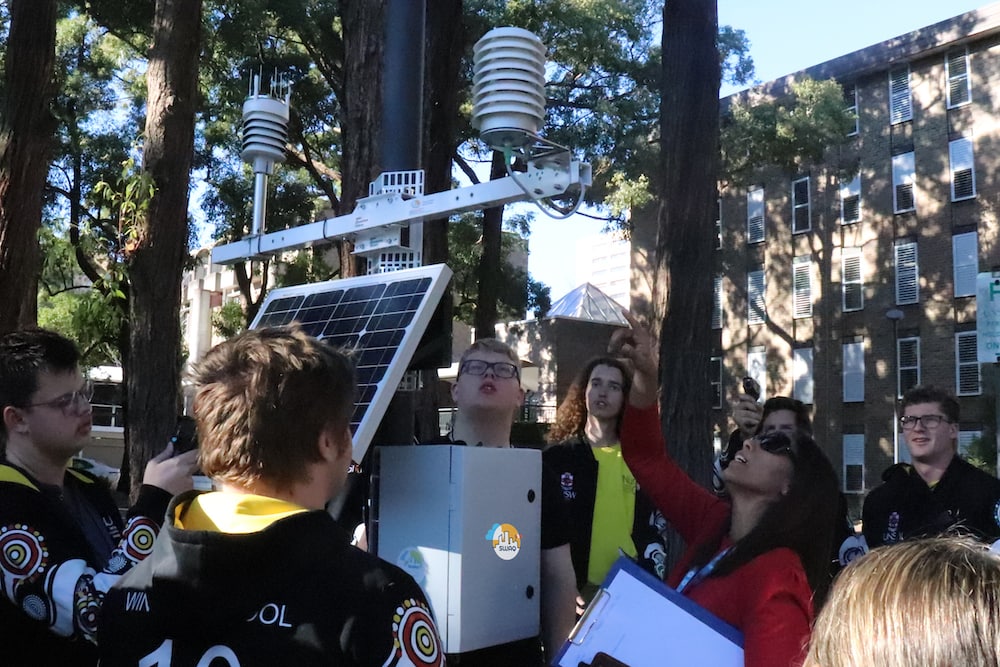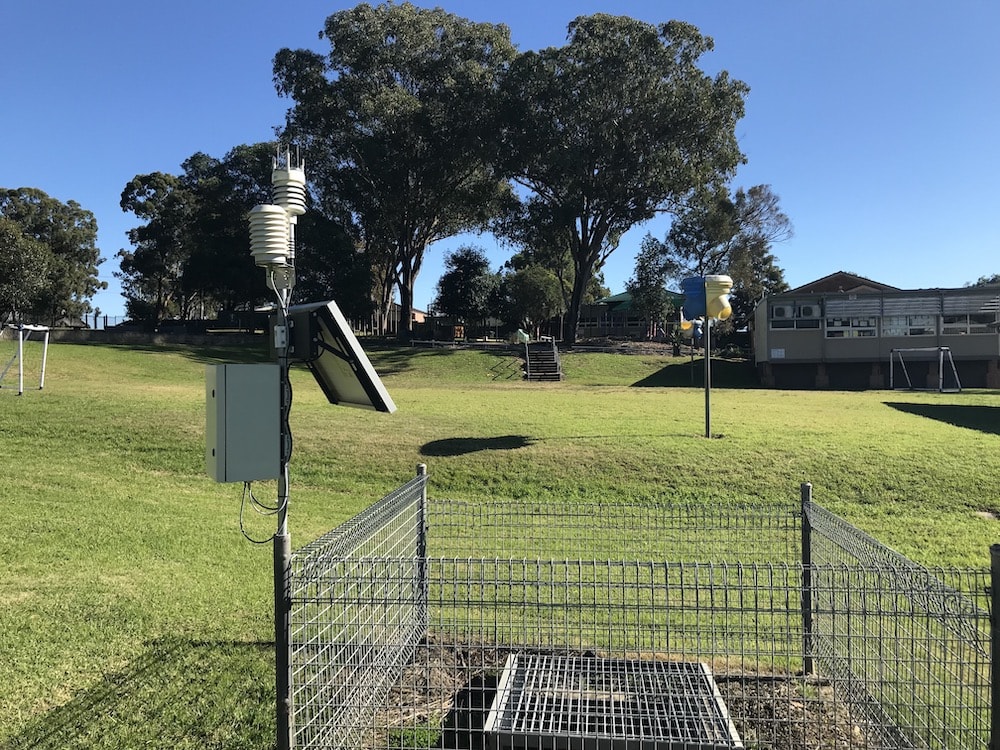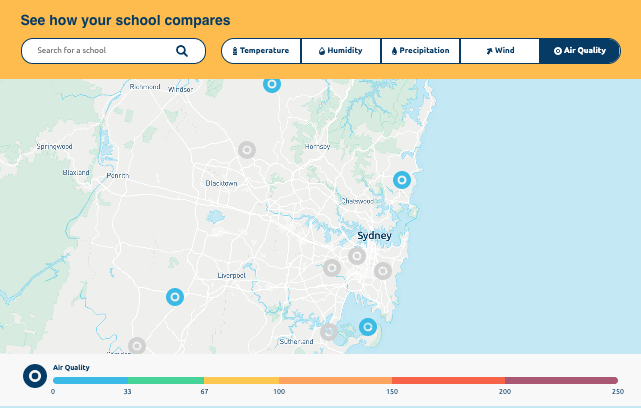Detailed time-series weather and air-quality data collected at Sydney schools are now available for download via TERN. The data collected by the Schools Weather and Air Quality (SWAQ) Citizen Science project includes the Black Summer bushfires and multiple COVID-19 lockdown periods. This presents a valuable dataset for urban ecology, air pollution, and climate research, and future urban planning. It also provides an opportunity for international collaborations and global-scale science.
Schools Weather and Air Quality (SWAQ) is a Citizen Science project led out of UNSW, and funded by the Australian Department of Industry, Science, Energy and Resources as part of its Inspiring Australia – Citizen Engagement Program. SWAQ places research-grade meteorological and air quality sensors in public schools located where there are gaps in existing government monitoring networks, and in areas of research interest such as growth regions.
Students collect, analyse, and interpret research quality data for use in science, mathematics, and geography curriculum-aligned classroom activities. Live and historical data are freely available online, enabling everyone to visualise the data and the current weather and air quality at each school’s location.
Now, thanks to a collaboration between TERN and SWAQ’s host, the ARC Centre of Excellence for Climate Extremes (CLEX), SWAQ data are also available for researchers via TERN’s Data Discovery Portal.
Access the data
Facilitate future urban planning
The SWAQ network includes twelve automatic weather stations and seven automatic air quality stations, providing observations of all major urban climate and air quality variables. Six meteorological parameters (dry-bulb temperature, relative humidity, barometric pressure, rain, wind speed, and wind direction) and six air pollutants (SO2, NO2, CO, O3, PM2.5, and PM10) are recorded.
Monitoring stations focus on areas of urban growth and areas not covered by existing monitoring networks.
“SWAQ has created for the first time a city-wide fine scale network of weather and air quality sensors that have enhanced our knowledge of spatial variability in Sydney’s urban atmospheric environment. These data collected can be used to inform decisions on residential and school energy use and mitigate weather-related health risks.”
Assoc. Prof. Melissa Hart, University of New South Wales
Promoting STEM skills
Beyond research purposes, SWAQ is a citizen centred network, promoting valuable STEM (science, technology, engineering, mathematics) skills among citizens and students. The project promotes STEM in schools, by providing them with access to scientific instruments and contact with research scientists within a context that is relevant to their community. Students build data literacy and learn valuable STEM skills through directly being involved in the collection and analysis of the meteorological and air quality data.
Citizen Science datasets like SWAQ complement TERN’s scientist-led ecosystem data collection in Australia, facilitating broad-scale spatial and temporal coverage, impossible to collect otherwise with TERN’s resources alone.
SWAQ data could, for example, be used in association with the comprehensive micrometeorological data collected by TERN around Australia to perform broader, more complex analyses on ecosystem function in both urban and natural landscapes.

Students and teachers examine SWAQ equipment set-up in their school grounds (credit: Melissa Hart)
Enabling global-scale science
Observations and metadata are available via TERN from September 2019 and include the Black Summer bushfires and multiple COVID-19 lockdown periods. Data from the network were recently used to provide a more localised understanding of air pollution impacts on Sydney schools from the black summer bushfires.
Recent scientific studies of air quality changes during pandemic-induced lockdowns, including by Europe’s Integrated Carbon Observation System (ICOS), illustrate the power of data like SWAQ’s.
ICOS, a partner alongside TERN in the Global Ecosystem Research Infrastructure (GERI), is currently investigating implementing a schools-based air monitoring network – this opens up opportunities for exchanges of information between the schools and students in Europe and Australia. It is also a step towards enabling further international collaboration, data sharing and global-scale scientific analyses, not only about air quality in cities around the world, but also the long-term educational impacts and opportunities resulting from such programs.
“The work of ICOS to better connect high-level climate science with citizen engagement is fully in line with TERN’s initiative. Educating school children to the scientific methodology will help build trust in science and in the role of evidence-based decisions. We look forward to exchanging our experiences with TERN on these issues.”
Dr Werner Kutsch, Director General of ICOS
SWAQ is a finalist for the Department of Industry, Science, Energy and Resources Eureka Prize for Innovation in Citizen Science








